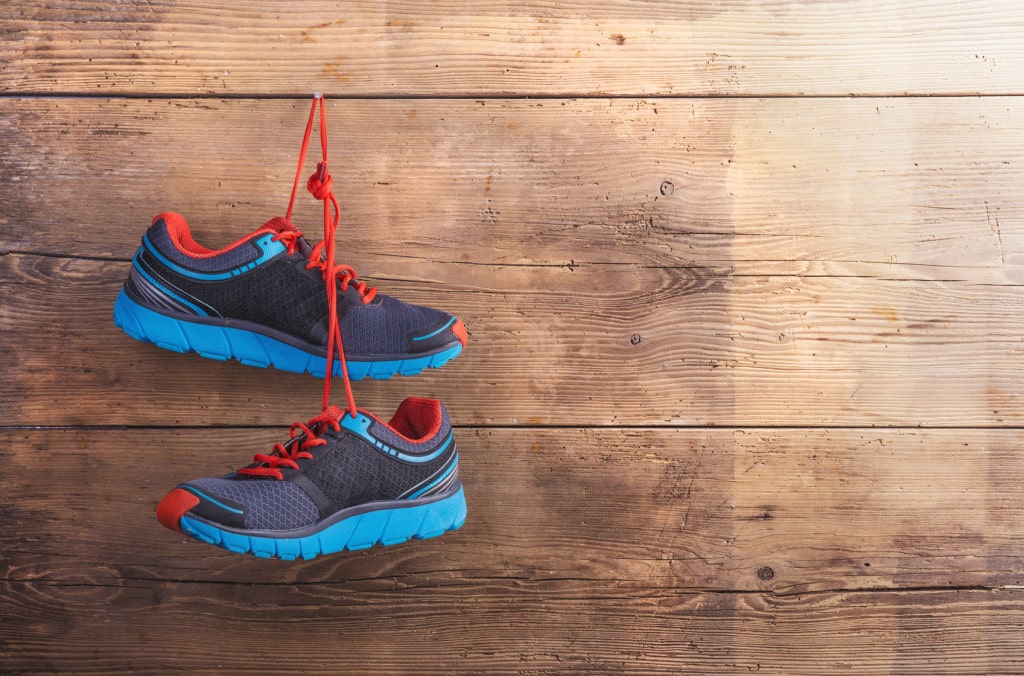Are you curious about how essential oils could up your running game? Well, you’re in the right place
You know, in the bustling world of wellness, essential oils not just about enchanting scents; these little wonders are celebrated for their power to enhance well-being.
But hold on, what’s their role in the fast-paced, adrenaline-filled life of a runner like you and me?
That’s exactly what I’m unpacking today. I’m going to take you through the fascinating ways essential oils can be a game-changer in your running routine.
Excited?
Then let’s get going.
What are Essential Oils?
Essential oils are made by extracting the best bits from different parts of plants: the leaves, stems, flowers, bark, or roots. This process ensures that the oil is brimming with the plant’s natural fragrance and beneficial compounds.
“Essential” in essential oils refers to the essence of the plant’s character and aroma being encapsulated in the oil. It’s like each drop holds a bit of the plant’s own story.
High-quality essential oils are usually free from additives or diluents. This means what you get is the pure power of the plant, unwatered-down and potent.
The extraction process is designed to preserve the most therapeutic aspects of the plant. So, when you use an essential oil, you’re harnessing the maximum healing potential that the plant has to offer.
Benefits of Essential Oils for Runners
The world of essential oils is not just about pleasant aromas; it’s a treasure trove of potential fitness and health benefits.
Here’s a glimpse into how these fragrant oils can be game-changers:
Supercharging Your Lungs
A whiff of Neroli or Spearmint essential oil before a race could actually turbocharge your lungs. A study exploring this found that participants who inhaled these essential oils before a 1500m run not only improved their lung function but also slashed their run times. And among the two, Neroli took the lead in effectiveness.
Enhancing Athletic Performance
According to the British Journal, essential oils are like a secret weapon for athletes. They not only prepare your mind and body for peak performance but also help in quicker recovery post-exercise. Imagine giving your muscles a motivational speech and a relaxing massage, all through the power of scent.
Relieving Stress and Boosting Endurance
A study in the Journal of the International Society of Sports Nutrition revealed some impressive stats. Participants who consumed a tiny amount of peppermint oil daily saw significant improvements in exercise performance and respiratory function.
Here’s the kicker: their overall exercise effort increased by 51%, and their endurance levels jumped by 25%. That means not only could they run faster, but they also kept going for much longer.
Relieving Asthma Symptoms
For those with asthma, running can be a challenge. But essential oils might offer some relief here too. Their natural properties can help open up airways, making breathing easier during physical exertion.
The Muscle Relaxer
Imagine finishing a grueling run and treating your sore muscles to the soothing touch of lavender oil. Mixed with a carrier oil, it can help ease muscle tension and promote relaxation.
The Cool Soother
Menthol in peppermint oil offers a cooling relief to muscles. It’s like a refreshing breeze for your aching limbs, and it may even boost circulation.
The Breath Enhancer
Breathing in eucalyptus oil can open your airways, making it easier to breathe during your runs. It’s like a breath of fresh air for your lungs!
Clearing Out The Passages
Known for its antimicrobial properties, tea tree oil helps keep your respiratory passages clear. Just a few drops in a diffuser or on a tissue, and you’re set for a comfortable run.
Combating Fatigue and Anxiety
The American Journal of Nursing Science highlighted the power of essential oils in warding off fatigue and anxiety. They’re like a natural energy drink for your soul, providing a boost when you need it most. Plus, they offer a glimmer of hope in fighting off the blues.
The Antimicrobial Guardian
Tea tree oil is like a shield for your skin. Its antimicrobial properties make it perfect for areas prone to chafing. Dilute it in a carrier oil and apply it to keep infections at bay and soothe any irritation.
The Skin Soother
Lavender oil is like a gentle, soothing caress for troubled skin. Whether it’s in a warm bath or mixed with a carrier oil, it can help ease the discomfort from chafing and blisters and promote skin healing.
The Cool Comforter
For that instant cooling relief on irritated skin, look no further than peppermint oil. When diluted and applied to chafed or blistered areas, it can be a real game-changer..
Potential Risks OF Essential Oils
While essential oils can be wonderful natural aids for various wellness practices, it’s important to recognize and understand their potential risks. Here’s what you should keep in mind:
Skin Sensitivity and Reactions
Essential oils are potent! Applying them directly without dilution can lead to skin irritation or allergic reactions. Always mix them with a carrier oil or lotion before skin application.
Risks of Ingestion
Not all essential oils are safe to eat or drink. In fact, some, like tea tree and eucalyptus oils, can be harmful if swallowed. Even those that are safe for consumption should be used with extreme caution and proper dilution.
Respiratory Concerns
Inhaling essential oils offers benefits, but overdoing it or inhaling undiluted oils can irritate your respiratory system. Be cautious, especially when using diffusers in enclosed spaces.
Potential Drug Interactions
If you’re on medication, some essential oils might not play well with your drugs. Always consult with a healthcare professional before incorporating essential oils into your routine, particularly if you have pre-existing health conditions or are on medication.
Not a Cure-All
While they have their perks, essential oils aren’t a panacea. They should complement, not replace, professional medical advice and treatments.
Evolving Scientific Evidence
The science behind the benefits of essential oils is still a work in progress. While there are promising studies, more research is needed to fully understand their effects and efficacy.
How Do you Use Essential Oils
Embarking on the journey of using essential oils is exciting, but it’s crucial to navigate it with knowledge and caution. Here’s a guide to help you use these aromatic treasures effectively and safely:
Aromatherapy: Inhaling the Goodness
Essential oils can have a profound impact on your limbic system, which influences your emotions, behaviors, and memories.
To enjoy aromatherapy benefits, you can use a diffuser to disperse the oil into the air, directly inhale from the bottle, or put a couple of drops on a handkerchief for occasional whiffs.
Consuming Essential Oils: A Word of Caution
Be very careful with ingestion. Not all essential oils are safe to eat or drink, and some can be harmful.
If you do use them in food or drinks, remember, less is more. A single drop in about 250 ml of liquid is usually sufficient.
Never ingest oils like tea tree and eucalyptus, and always consult a healthcare professional before consuming any essential oil.
Topical Application: Gentle on Your Skin
Dilution is the golden rule. Mix essential oils with a carrier oil or lotion before applying to your skin to avoid irritation.
Applied topically, essential oils can target specific areas for relief or contribute to overall well-being through skin absorption.
Natural First Aid
Essential oils can be a part of your natural first aid kit. For sore spots or minor injuries, a warm compress with a few drops of suitable essential oil can provide relief. Just be mindful of oils that might irritate the skin.



